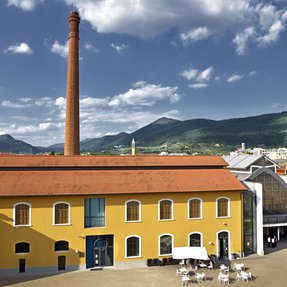
Industrial archeology
Favored by environmental factors and promoted by initiative of skilled craftsmen and merchants, tissue processing has begun to develop since the twelfth century, becoming over time the main economic resource of the city and of the Bisenzio Valley. The great development of textile activity dates back to the 14th century, when lanaioli (wool workers), gathered in the Wool Craft Corporation, elaborate the statutes for fabrication and trade of cloths. One of the greatest merchants of the 14th century, Francesco di Marco Datini, gives a great impetus to the sector thanks to his international trade.
The Industrial Revolution sees Prato at the forefront of textile machinery construction. Further industrial development occurs in the second half of the nineteenth century, when it begins to regenerate wool from used rags, the famous "cenci", to produce carded fabrics. The original production system consists of a few large full-scale companies supported by a network of small businesses that, by resisting wars and crises, have made Prato the main wool center in Europe where today high quality fine fibers articles are produced to meet fashion trends.
The old factories, revitalized with new content, are set up as modern urban redevelopment centers. The urban development of Prato was characterized by the spontaneous inclusion of the first settlements in the nineteenth century, which modified the secular structure of the original hamlet.
Industrial archaeology in Prato - Video
Information
-

Involved Municipalities: Vernio, Vaiano, Prato, Cantagallo
















